Implementation of the Flood Risk Management (Scotland) Act 2009: report to the Scottish Parliament
Progress of work being carried out through the implementaion of the Flood Risk Management (Scotland) Act 2009.
2. Understanding And Working With Catchments And Coasts
2.1 Background
Actions that affect one part of a river, coast or estuary can have consequences elsewhere. This means that flood management actions are most effective when they are planned and coordinated within catchments and along coasts in a way that is uninhibited by administrative boundaries.
Adopting a catchment approach to flood risk management requires an appreciation of catchment and coastal processes, and an understanding of how best to manage the sources and pathways of flood water. This includes looking at how the timing, magnitude and duration of a flood can be managed, e.g. by creating, restoring and enhancing natural features and characteristics of the landscape, including wetlands, woodlands, vegetation, functional flood plains, saltmarshes, beaches and dunes.
2.2 Flooding and Land-Use Planning
Scotland applies a precautionary approach to managing flood risk.
SEPA is a statutory consultee in the land-use planning process and provide advice, evidence and support to help planning authorities meet their statutory FRM and land-use planning duties through appropriate development. This ensures that core flood risk management principles such as avoidance are carried through into sustainable place making and included at the heart of land-use planning decision making process.
The Scottish Government and SEPA have commissioned ClimateXChange to undertake research in 2019 to help understand the causes and impacts of piecemeal floodplain loss in Scotland.
As part of the Scottish Government's commitment to inclusive economic growth we all want to see a flexible, responsive planning system that is best placed to serve the needs of our communities. The current Planning Bill is part of a package of reforms responding to the Independent Review of the planning system which reported in May 2016. Following on from the Planning Bill we will be moving to refresh the National Planning Framework and Scottish Planning Policy. This has the potential to radically simplify the planning system. It will mean that policies do not need to be repeated over and over again in plans throughout Scotland.
2.3 Dynamic Coast – Scotland's National Coastal Change Assessment
One-fifth of our coastline (over 400kms) is 'soft' and therefore susceptible to erosion. Rising sea levels, increased coastal erosion and erosion-enhanced flooding will progressively impact Scotland's soft coastlines, its assets and communities. At present 'natural defences' such as beaches and dunes protect £13bn of assets, some of these are eroding and £400m assets will be threatened by 2050, if erosion continue.
To better understand how our coastline is changing and how that might increase flood risk to coastal communities, the Scottish Government set up the Dynamic Coast project through CREW to identify our 'soft' coastline and assess coastal change. The research was carried out by the University of Glasgow and managed by SNH.
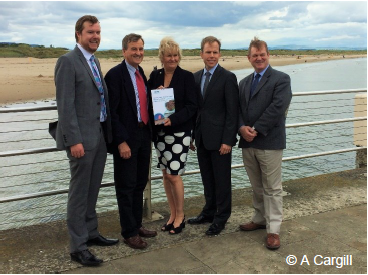
In 2017 Roseanna Cunningham, the Cabinet Secretary for Environment, Climate Change and Land Reform, launched phase 1 of Dynamic Coast project which identified the assets at risk along our coastline if recent erosion rates continue.
As coastal erosion and flooding are interlinked they must be considered jointly. SEPA has used outputs from the Dynamic Coast project to inform the second National Flood Risk Assessment published in December 2018.
The Scottish Government is working with partners and stakeholders to plan, mitigate and adapt in advance of greater impacts along the coast. This requires cross sector and integrated adaptation and mitigation planning.
Phase 2 of Dynamic Coast, started in early 2018 and will assess the impacts of climate change and sea level rise on erosion rates. Focussing on sites, including Montrose, Tiree and St Andrews, the Dynamic Coast team will work with local stakeholders to develop adaptation plans.
2.4 Natural Flood Management
The Scottish Government, SEPA, local authorities and other partners continue to work together to deliver natural flood management (NFM) in Scotland.
SEPA's NFM opportunity maps have been used to identify over 100 actions with an NFM component in the 2015 FRM Strategies and 2016-22 Local FRM Plans. This includes proposals for four NFM schemes and a further 10 engineered schemes that will include an NFM element. In addition local authorities will carry out 23 studies with a sole focus on NFM and a further 69 engineered scheme studies that will include options for NFM during this period.
2.4.1 Scottish Government Rural Payments Agri-Environment Climate (AEC) Scheme
This promotes land management practices which protect and enhance Scotland's environment, improve water quality, manage flood risk and mitigate and adapt to climate change. The Scheme now compensates land managers for implementing measures on their land that can help increase storage of flood waters. This includes capital items and management options such as embankment removal. At the end of 2018 the first AEC scheme payment for embankment removal capital works on the River Nith was agreed.
2.4.2 SEPA Natural Flood Management Handbook
In December 2015 SEPA launched the Natural Flood Management Handbook. The handbook details how NFM can contribute, as part of a suite of measures, to help reduce the impact of frequent flooding on a smaller scale. It also provides practitioners with valuable information on how best to implement NFM measures.
2.4.3 Natural Flood Management Network
Scottish Government, SEPA and James Hutton Institute worked together to develop the NFM Network Scotland and to launch it in 2018. This is the first ever dedicated online resource on NFM that aims to bring together practitioners, researchers and communities from around the world to share knowledge and best practice. The network provides information on relevant news and events, Scottish case studies, and NFM resources.
2.5 EU Interreg North Sea Region Building with Nature project
The Scottish Government, Tweed Forum and SEPA, are partners in the EU Interreg Building with Nature project which aims to demonstrate how measures that work with natural processes can manage flood and coastal erosion risks whilst enhancing ecosystem services.
The lack of robust evidence for NFM measures means that uptake across the North Sea Region is limited. Belgium, Denmark, Germany, Netherlands, Norway, Scotland, and Sweden have therefore come together through Interreg to develop and share a common transnational evidence base to justify investing in building with nature solutions.
The four year project, in which the Scottish Government has a lead role, involves seven coastal and five catchment sites, including the Eddleston Water.
Between 2016-2020, Scotland will receive up to 400,000 € for the Eddleston Water project;
Scotland has hosted a number of meetings and site visits since the project started. Most notably, Dundee played host to all the project partners in September 2018. This event included field trips to the Eddleston Water project, Montrose Bay and St Andrews beach.
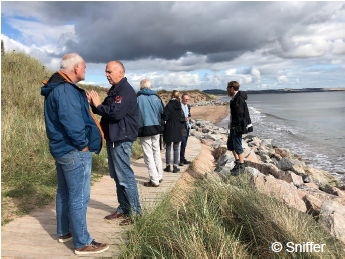
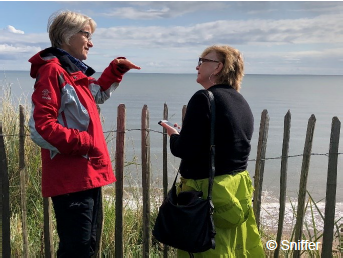
2.5.1 The Eddleston Water Project
The Eddleston Water project started in 2010 and aims to reduce flood risk and restore the river for the benefit of the local community and wildlife. The project is a partnership initiative led by the Tweed Forum, with support from Scottish Government, SEPA, and the Scottish Borders Council. Monitoring is provided by the University of Dundee and the British Geological Survey.
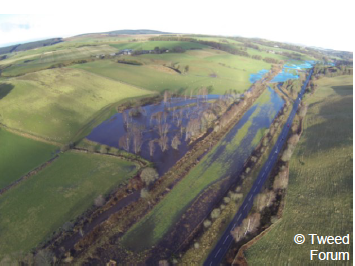
Working with land managers on 17 separate farms the Tweed Forum has been able to introduce subtle changes to current land management practices in order to slow water flow from the hills, create floodwater storage areas and reconnect the river with its floodplain. This includes creating over 200 ha of riparian woodland, planting almost 300,000 native trees, re-meandering 2.2 km of river, removing 2.9 km of flood embankments, installing 116 'high flow restrictors'.
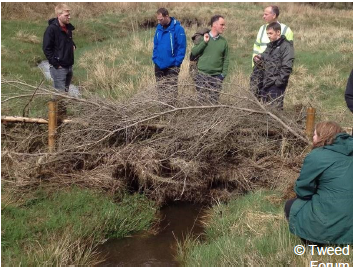
The Eddleston catchment is comprehensively monitored so that the effect of restoration measures can be fully understood. This monitoring programme consists of a hydrometric network (which will measure water as it enters and flows through the catchment), groundwater monitoring, water quality measurements as well as ecological and geomorphological surveys. The detailed monitoring programme is funded by the Scottish Government. An in-depth project progress report from 2016 is available here.
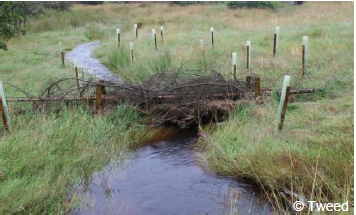
After winning the UK River Prize in 2016 the Tweed Forum were Thiess International River Prize Finalists in 2017. Alongside a wide field of initiatives, the Tweed Forum was recognised international best practice from catchments across the world, in river restoration and natural flood management.
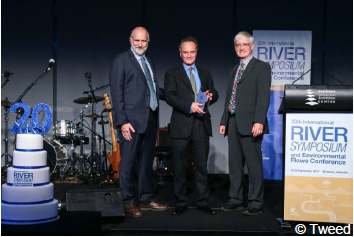
2.5.2 Integrating Natural Flood Management
In addition to flood risk mitigation, NFM frequently delivers many other benefits. In recognition of this, opportunities to integrate NFM delivery with other drivers have also been examined. Analysis of Scotland's National Forest Estate (NFE), for example, identifies where forestry management may influence flood risk. This information informs NFM delivery on the NFE as well as more sympathetic forestry management that better takes account of potential impacts on flood risk areas.
Opportunities to integrate NFM with river basin management planning have also continued with many local authorities jointly examining RBMP and NFM opportunities when undertaking their flood studies.
Contact
Email: Gordon Robertson Flooding_Mailbox@gov.scot
There is a problem
Thanks for your feedback